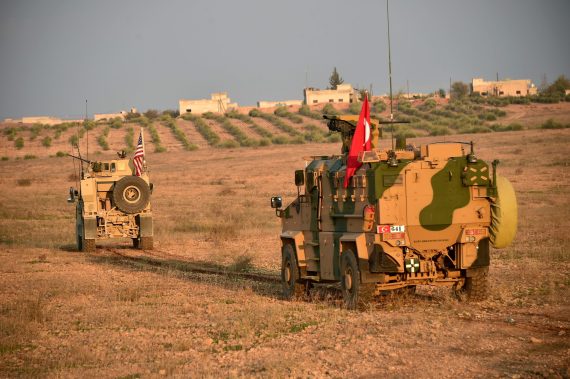President Trump’s seemingly abrupt decision to pull out of Syria has drawn a lot of criticism from the U.S. media as well as unnamed sources from within the U.S. military. Critics of a quick withdrawal argued that the U.S. should not abandon “Kurdish allies” and that the ground would be left wide open to Iranian and Russian influence. They also argued that Daesh was far from finished. Washington foreign policy experts have been debating the wisdom of an immediate pullout in quite a politicized fashion but they have not been able to make a strong case for staying either. The U.S.-Turkey cooperation is the strongest option for creating lasting stability in northern Syria but it will require a serious strategy.
The main argument of the Obama administration to conduct military operations against Daesh in Syria was that the terror organization was violating international norms, i.e. rendering the Iraq-Syria border meaningless. The sudden takeover of Mosul in the summer of 2014 and the murder of American journalists had created a public outcry and President Obama responded by helping the Iraqi government. Then, the U.S. was clear that the violation of international borders by Daesh would not be accepted. During the Kobani fight, the Obama administration decided to help the YPG fighters on the ground despite Turkey’s warnings. Turkey tried to help the fight by facilitating the passage of Iraqi Peshmergas to Kobani via Turkish territory but the YPG wanted to claim the “victory” against Daesh all on its own. President Obama reassured Turkey that the help was only temporary and strictly against Daesh.
Instead of working with a NATO ally, Pentagon chose to work with a sub-state actor that it found more “effective” against Daesh. The basic dilemma of working with a group considered a terror group by a NATO ally never really escaped the attention of any serious analyst.
Ever since the fall of 2014, the YPG issue has been a major thorn in U.S.-Turkey relations. The U.S. has justified its continued and expanded support to the group despite knowing full well it was simply the Syrian branch of the PKK, a fact admitted by U.S. government officials in different occasions. More crucially, the U.S. declined various Turkish proposals to work together against Daesh, for example prior to the Raqqa fight. Instead of working with a NATO ally, Pentagon chose to work with a sub-state actor that it found more “effective” against Daesh. The basic dilemma of working with a group considered a terror group by a NATO ally never really escaped the attention of any serious analyst. The U.S. support for the YPG has been justified by the need for working with “local allies” in the anti-Daesh campaign but it has been impossible for U.S. policymakers to put forward a truly strategic justification.
Recommended
The continued disconnect between the lack of a strategic purpose and tactics used against Daesh ensured the current confusion. Defeating the terrorist organization was never properly defined and the connection between the anti-Daesh fight and U.S. troop presence in northern Syria in support of the YPG was never fully made. The failure to create a clear strategy risked alienating allies like Turkey and confusion among European allies as well. Both the Obama and Trump administrations found themselves caught between the need to respond to Daesh and the American unwillingness to get involved in the region. Neither has been able to offer a strategy that addressed both requirements. Obama’s support for the YPG decision was based more on the former while Trump’s withdrawal decision is based more on the latter. When neither president has put forward a clear strategy and pushed the interagency toward a common goal, we now find ourselves in a situation where different government officials and the agencies appear to work at cross purposes. The disagreement within the US government is visible in the unwillingness to implement President Trump’s Syria decision.
The next challenge for the U.S.-Turkey relationship is to craft a serious strategy allowing for the U.S. withdrawal, as Turkey assumes a larger role to prevent a power vacuum. However, if the U.S. tries to impose conditions on Turkey that may be understood to impinge on Turkish national security requirements, it will mean we are up against the hill once again.
Going forward, the central question will remain the same: what is the U.S. strategy in Syria? With or without U.S. troop presence on the ground, what is the main goal? Some of the goals that have been put forward lack a unifying theme and sometimes they seem at odds with each other. There have been a lot of push back from Washington and now the administration seems to be tilting toward “protecting the Kurds.” However, for Turkey, it is not the Kurds but the PKK’s Syrian branch YPG that the US allied with is the problem. If anything, the YPG dominance in the area is an affront to the Kurds in general and a destabilizing factor in terms of ethnic relations in northern Syria. The next challenge for the U.S.-Turkey relationship is to craft a serious strategy allowing for the U.S. withdrawal, as Turkey assumes a larger role to prevent a power vacuum. However, if the U.S. tries to impose conditions on Turkey that may be understood to impinge on Turkish national security requirements, it will mean we are up against the hill once again.





